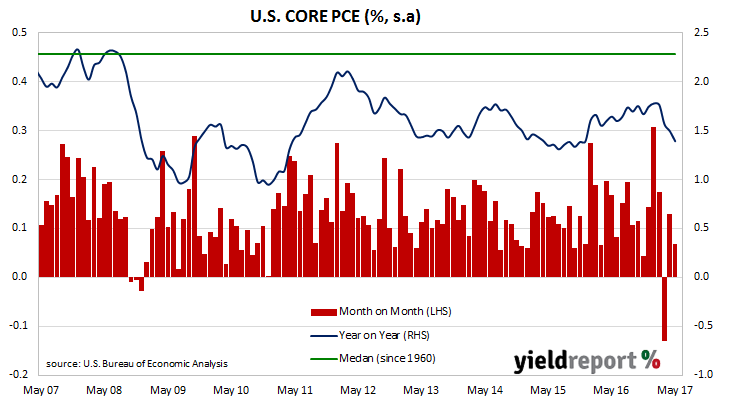One of the US Fed’s favoured measures of inflation is core personal consumption expenditure (PCE). The core version of consumer spending strips out energy and food components, which are volatile from month to month, in an attempt to identify the prevailing trend. It’s not the only measure of inflation used; the Fed also tracks the consumer price index (CPI) and producer price index (PPI) from the Department of Labor.
The latest core PCE figures have been published by the Bureau of Economic Analysis as part of May personal income and expenditure data. On a month-on-month basis, core PCE rose by +0.2%, which is down from April’s figure of +0.2% but in line with expectations. On a year-on-year basis, core PCE grew by +1.4% which is also lower than April’s comparable figure of +1.5%.

The U.S. Fed is known to have a 2% target for annual core PCE but the recent two months of soft PCE data does not appear to have changed Fed officials’ view of the need for official rate “normalisation”. Bond yields rose on the day but possibly not because of the report. Yields on 2 year Treasury bonds rose 1bp to 1.38% while yields on 10 year bonds rose 3bps to 2.30%.

